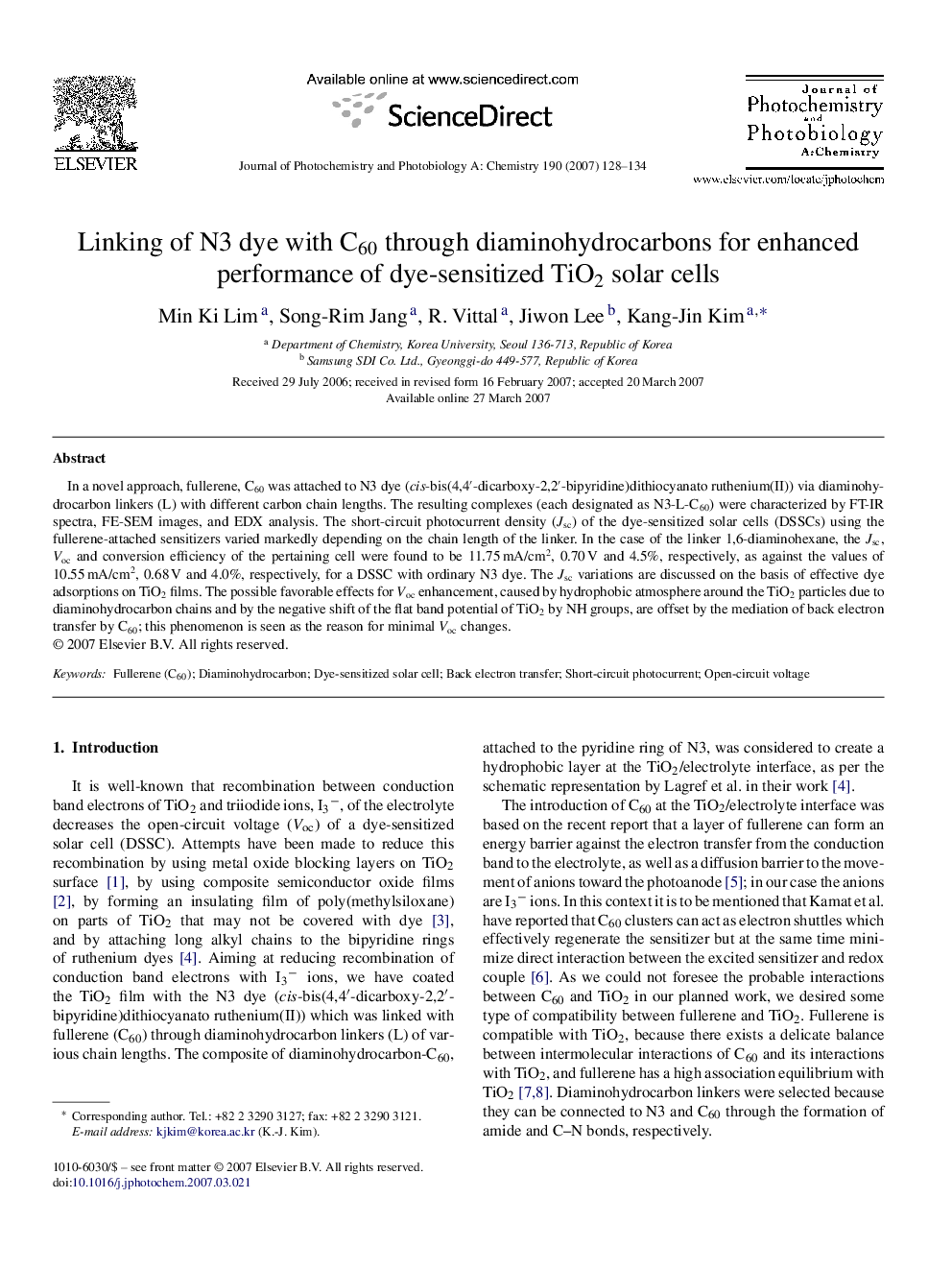| Article ID | Journal | Published Year | Pages | File Type |
|---|---|---|---|---|
| 28153 | Journal of Photochemistry and Photobiology A: Chemistry | 2007 | 7 Pages |
In a novel approach, fullerene, C60 was attached to N3 dye (cis-bis(4,4′-dicarboxy-2,2′-bipyridine)dithiocyanato ruthenium(II)) via diaminohydrocarbon linkers (L) with different carbon chain lengths. The resulting complexes (each designated as N3-L-C60) were characterized by FT-IR spectra, FE-SEM images, and EDX analysis. The short-circuit photocurrent density (Jsc) of the dye-sensitized solar cells (DSSCs) using the fullerene-attached sensitizers varied markedly depending on the chain length of the linker. In the case of the linker 1,6-diaminohexane, the Jsc, Voc and conversion efficiency of the pertaining cell were found to be 11.75 mA/cm2, 0.70 V and 4.5%, respectively, as against the values of 10.55 mA/cm2, 0.68 V and 4.0%, respectively, for a DSSC with ordinary N3 dye. The Jsc variations are discussed on the basis of effective dye adsorptions on TiO2 films. The possible favorable effects for Voc enhancement, caused by hydrophobic atmosphere around the TiO2 particles due to diaminohydrocarbon chains and by the negative shift of the flat band potential of TiO2 by NH groups, are offset by the mediation of back electron transfer by C60; this phenomenon is seen as the reason for minimal Voc changes.
